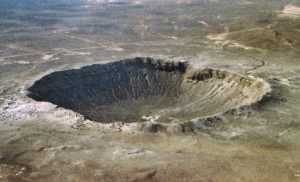The best answer to this question has to refer to the objective function of you as an investor. To paraphrase another author (Joel Greenblatt) “Choosing individual assets without any idea of what you are looking for is like running through a dynamite factory with a burning match. You may live, but you’re still an idiot.”
We have to know why we are buying bonds in the context of our overall portfolio. If we own other assets that provide us with inflation protection (real-estate, equities with pricing power, inflation linked securities, gold, commodities etc.), then a bond market that is 10% to 20% cheaper today than three weeks ago is a great investment as a source of protection against economic slowdown or financial crises and also as a source of income (and, of course, this depends on your age, other economic, personal and financial conditions).
And as we have noted before, at the low yields we saw this summer, the bond market was less of an investment and more of a pure insurance policy. At 2.5% yield on the ten year Treasury note, or over 3% on the long bond, the bond market has regained some of its investment characteristics, while keeping its insurance-like properties. On the other hand, if you already own a lot of bonds or other fixed income securities that might get crushed if the inflation disease raises its ugly head, then maybe it is better to wait to buy more bonds. There are certainly a lot of holders of bonds at much lower yields who hold them in a levered fashion as investments that they hoped would be bought out by others at even higher prices and lower yields; and they might be forced to sell (running through a dynamite factory with a lit match they were!). Just look at Germany and most of Europe where bonds are still trading at negative yields despite the sharp backup in US bond yields.
So, as always, the prescription for the disease depends on the patient. We have to look at things rationally and with our biases clearly accounted for, and then decide whether the bond market today is good medicine or not. It is certainly on sale, but just as we don’t buy medicine simply because it is cheap, don’t just let price dictate what to do with the market today.
Explanation of the “hill” or the “crater” confusion:
This is the “right side up” picture of the meteor crater. The fact that depending on the perspective the picture either looks like a hill or a crater has to do with the fact that the brain starts with the prior (“base rate”) that light is coming from the top, and uses this to weight the image and interpret it as a hill or a crater. If you flip the image on its edge, it will alternatively look like a hill and a crater, but not both at the same time.

Vineer Bhansali, Ph.D. is the Founder and Chief Investment Officer of LongTail Alpha, LLC, a California-registered investment adviser and a CFTC-registered CTA and CPO. Any opinions or views expressed by Dr. Bhansali are solely those of Dr. Bhansali and do not necessarily reflect the opinions or views of LongTail Alpha, LLC or any of its affiliates (collectively, “LongTail Alpha”), or any other associated persons of LongTail Alpha. You should not treat any opinion expressed by Dr. Bhansali as investment advice or as a recommendation to make an investment in any particular investment strategy or investment product. Dr. Bhansali’s opinions and commentaries are based upon information he considers credible, but which may not constitute research by LongTail Alpha. Dr. Bhansali does not warrant the completeness or accuracy of the information upon which his opinions or commentaries are based.